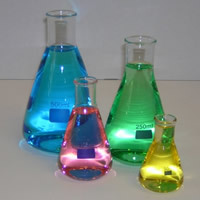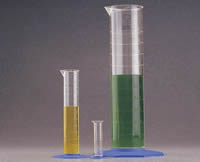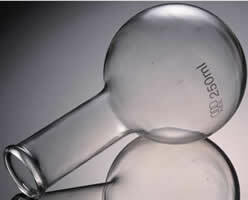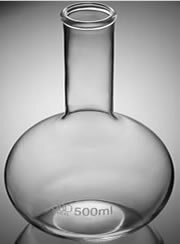No wonder laboratory instruments receive this name, the material used to manufacture them is tempered glass. Get to know some of the glassware used in the laboratory, and find out where scientific research is carried out.
Test tubes: one of the most useful tools in the laboratory, used to make small scale reactions.

Beaker: instrument of general use in the laboratory, it is used to administer reactions between solutions, dissolve solid substances, carry out precipitation reactions and heat liquids.

Erlenmeyer: performs the same functions as the beaker, but with one difference, its tapered shape allows manual stirring without the risk of losing the stirred material. This function is essential in titrations.

Beaker: equipment for measuring and transferring variable volumes of liquids (from 25 to 1000 mL).

Burette: instrument used in titrations for exact measurements of liquids. The burette is ideal for volumetric analysis because it has a graduation in its length to facilitate the reading of the drained volume.
Do not stop now... There's more after the advertising ;)

Pipette: utensil for measuring and transferring liquids, liquid enters through a hole in the lower end through suction.

Separation funnel: Used in the separation of heterogeneous mixtures of non-miscible liquids and in liquid/liquid extraction.

Round bottom balloon: Used in reflux and vacuum evaporation systems.

Flat bottom balloon: Container to contain liquids or solutions, it is used in reactions with gas release.

Volumetric Balloon: It has a defined volume and is used to prepare solutions with more precise amounts.

By Líria Alves
Graduated in Chemistry
Would you like to reference this text in a school or academic work? Look:
SOUZA, Líria Alves de. "Lab glassware"; Brazil School. Available in: https://brasilescola.uol.com.br/quimica/vidrarias-laboratorio.htm. Accessed on June 28, 2021.



